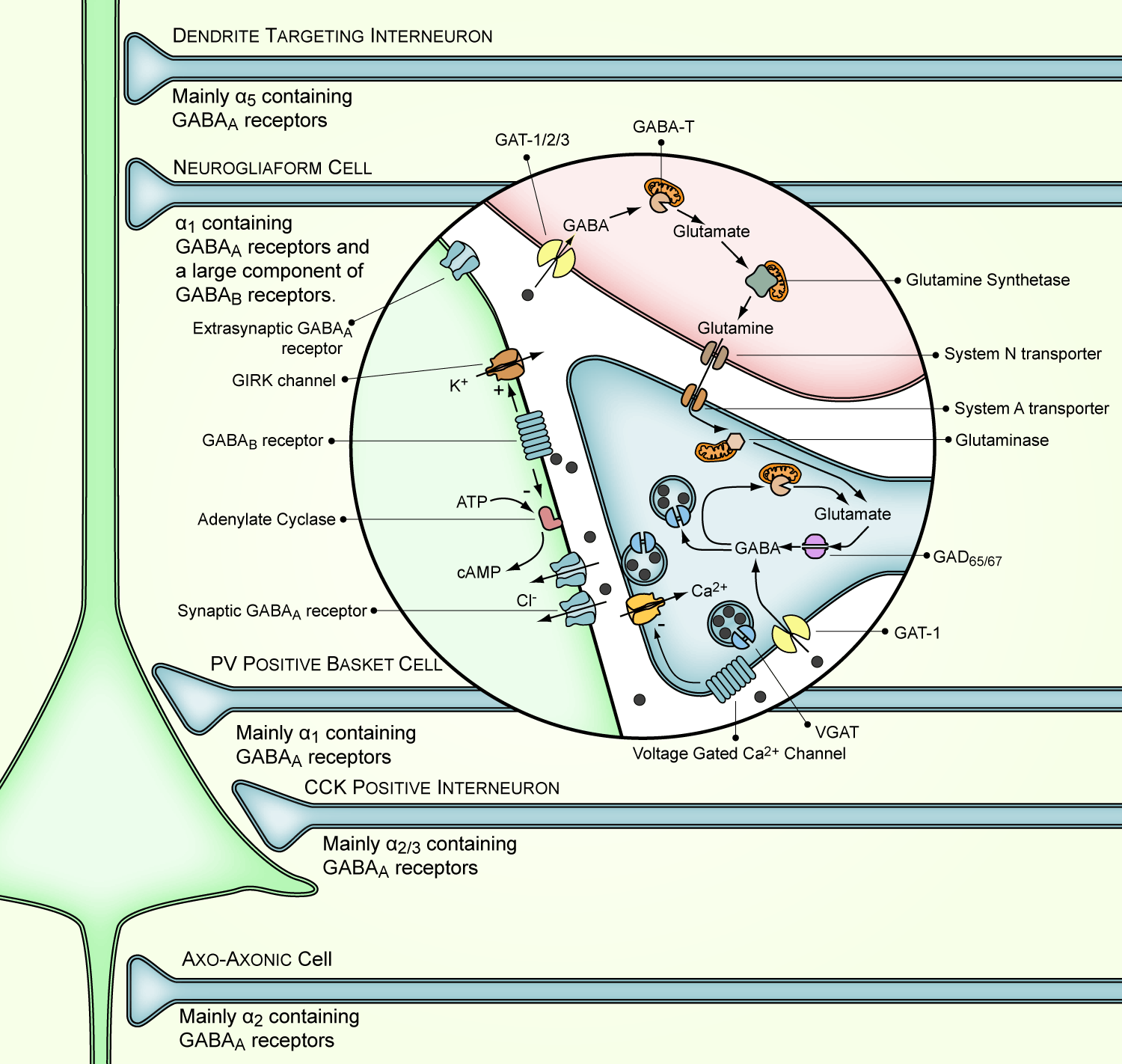The main inhibitory neurotransmitter at synapses in the cerebral cortex is gamma-Aminobutyric acid or GABA. This small molecule plays a crucial role in how the brain functions and the tiny inhibitory synapses are the targets of alcohol, barbiturates, and benzodiazepines such as Valium.
But until recently we did not know very much about GABA synapses in the human brain. A recent study from my lab has shown how GABA synapses in the human brain change across the lifespan from infants to older adults. Our study shows that this tiny structure is changing constantly throughout our lives.
GABAergic synapses are complex structures with many pre- and post-synaptic proteins that affect how inhibitory synapses function. GABA signaling stops run away neural activity that could lead to a seizure and it also sets the balance between excitation and inhibition that is so important for neural plasticity.
 Our new study shows that these pre- and post-synaptic GABAergic proteins are changing across the life span. Some of proteins increase while other decrease and still other increase then decrease. This creates a complex picture of GABA synapses at different stages in life.
Our new study shows that these pre- and post-synaptic GABAergic proteins are changing across the life span. Some of proteins increase while other decrease and still other increase then decrease. This creates a complex picture of GABA synapses at different stages in life.Inspired by the World Cup I think you can begin to appreciate how GABA synapse change across our life by thinking about how the game of soccer changes when played by children versus top athletes. Imagine that the soccer game represents the GABA synapse, the ball is the neurotransmitter, and the players the proteins within the synapse. Let's look at how the style of play changes over the lifetime.
- When its a kids game the ball moves slowly up and down the pitch, the offense and defense are disorganized, the shots on goal are weak, but the goal keeper is also slow, so a lot of shots score.
- A game with teenage players is very different, its fast, the shots on goal are much stronger, but sometimes the decisions are poor and there is not good regulation of ball movement.
- Young adult soccer players are at their peak, the ball moves quickly up and down the pitch, strikers make strong accurate drives on goal, the goal keepers are fast to pick-up shots on goal, the players work as a team and regulate the tempo of the game.
- The game slows down again when the players are older, it shifts to more offense and shorter less sustained attacks on goal.
These stages in the development of the soccer game are similar to the stages that we found for the development of GABA synapses over the lifetime. There are 3 times when there are rapid changes in the balance of proteins that make-up of GABA synapses. Those changes occur between children to teens, teens to young adults, and young to older adults. And those rapid changes affect how GABA synapses function in the human brain.
The changes in GABA synapses in the human brain across the lifespan are extremely important for understanding how drugs that target GABA synapses effect brain function. This new information about GABA synapses in the human brain is essential for the development of new drugs aimed at reinstating plasticity and translating exciting new therapies being developed in the lab into effective treatments for a wide range of neurological and psychiatric diseases.
Developmental changes in GABAergic mechanisms in human visual cortex across the lifespan
Joshua G .A . Pinto 1, Kyle R . Hornby 1, David G . Jones 1 and Kathryn M. Murphy 1, 2*
McMaster Integrative Neuroscience Discovery and Study Program, McMaster University, Canada Department of Psychology, Neuroscience&Behaviour, McMaster University, Canada





Comments